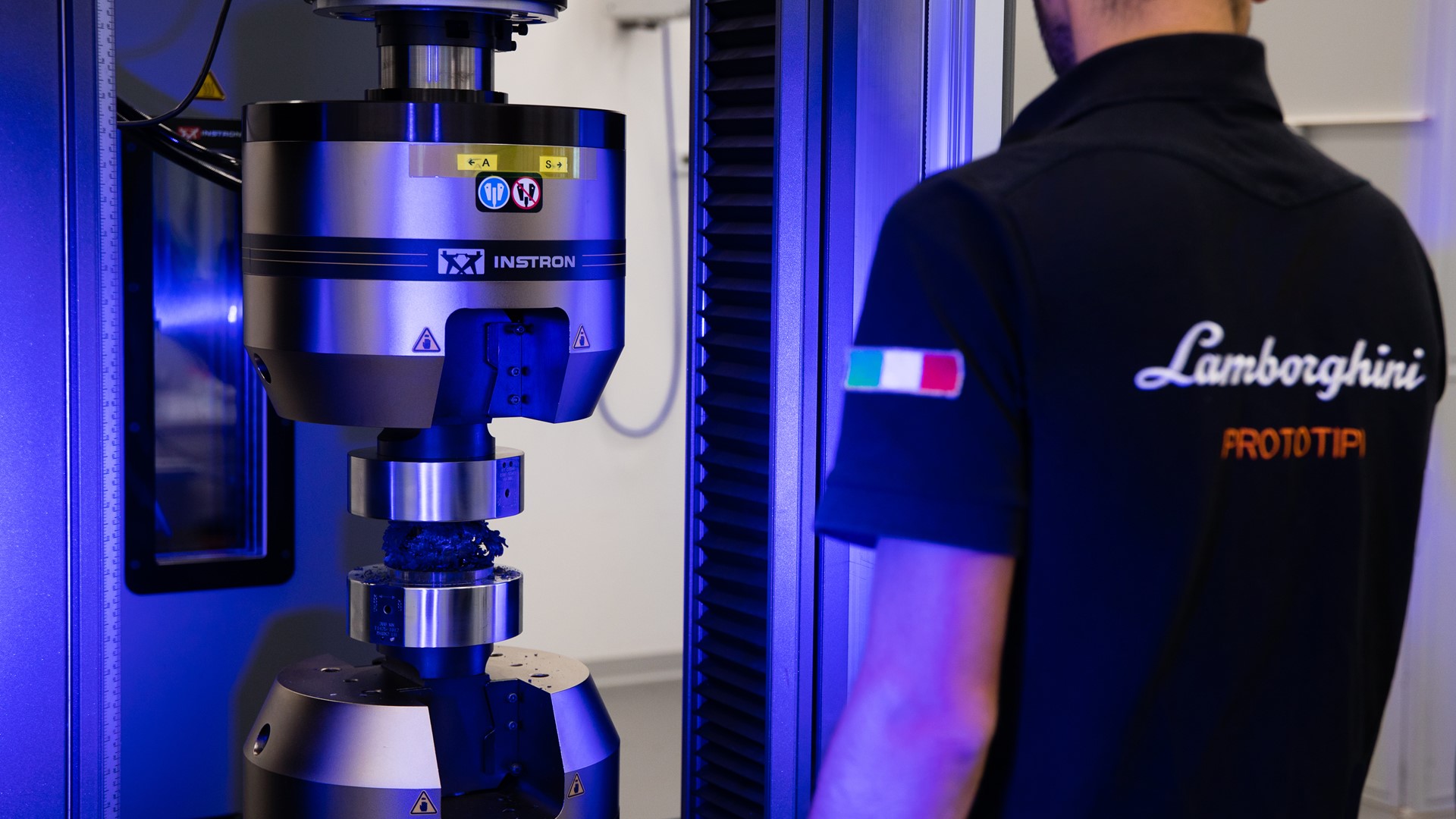Sant’Agata Bolognese/Houston, 25/10/2019 – The joint research on advanced carbon fiber composite materials initiated two years ago between Automobili Lamborghini and the Houston Methodist Research Institute has now reached an important turning point.
No earlier than November 2, a Northrop Grumman Antares rocket is scheduled to launch from Wallops Flight Facility in Virginia to the International Space Station (ISS), carrying with it a series of sample composite materials produced by Automobili Lamborghini.
The launch is part of a testing campaign sponsored by the ISS U.S. National Laboratory and overseen by the Houston Methodist Research Institute. Its aim is to analyze the response of five different composite materials produced by Lamborghini to the extreme stresses induced by the space environment, in view of future applications on the cars from Sant’Agata Bolognese and in the medical field.
The mission, for which Lamborghini is providing its collaboration free of charge, takes place two years after the agreement signed by Stefano Domenicali, Chairman and Chief Executive Officer of Automobili Lamborghini, and Mauro Ferrari, then President and CEO of the research institute and now President of the European Research Council. With this agreement, a joint research project was initiated to study the biocompatibility of the composite materials to determine their possible use in prosthetic implants, but also in subcutaneous devices, taking advantage of their particular properties of light weight, radio transparency and radio compatibility.
The launch to the ISS orbital station bears the three colors of the Italian flag: the Italian contribution is represented not only by Lamborghini but also by Dr. Alessandro Grattoni, Chairman of the Department of Nanomedicine of the Houston Methodist Research Institute, and by astronaut Luca Parmitano who, on his second stint onboard the ISS, has just become its commander, an absolute first for Italy.
“We are very proud,” remarked Stefano Domenicali. “Lamborghini is breaking ground as the first automaker in the world to conduct carbon fiber materials science research on the ISS. In addition to representing an important example of corporate social responsibility, this mission is also fully in line with our philosophy and values. Lamborghini is a brand that has always been committed to going beyond limits in every area of its activity and to being a pioneer in the realm of technology.”
Focus of the research project
In detail, the five samples of carbon fiber selected for the experiment exploit some of the most innovative technologies currently available. They are the result of the company’s historical know-how in this field and in particular of the research and development work carried out at the “Centro Sviluppo Compositi” (Composites Development Center) and its ACLSD (Advanced Composites and Lightweight Structures Development) laboratory located at the Sant’Agata Bolognese headquarters, active for many years in the field of high performance composites.
Of particular interest not only for the biomedical and automotive field is the 3D-printed continuous-fiber composite, which makes it possible to combine the extreme flexibility of “additive manufacturing” with high-level mechanical performance, equal to that of a good quality aluminum for structural uses.
An important role in the experiment is also played by the discontinuous-fiber composites, a technology in which Automobili Lamborghini has been a pioneer since the launch of the “Sesto Elemento” limited series in 2010 and whose use is now a consolidated practice over the company’s entire product range.
Finally, the experimental batch also includes samples made of pre-impregnated epoxy resin and autoclaved polymer fabric, a traditional technology but still at the top in terms of mechanical characteristics.
On board the ISS for a period of six months, the materials will be subjected not only to extreme thermal excursion cycles with peaks from -40 to +200 degrees centigrade, but also to massive doses of ultraviolet radiation, gamma rays, and the flow of atomic oxygen caused by ionization, on the part of solar radiation, of the highest and most rarefied layers of Earth’s atmosphere.
At the end of the mission, the samples returned to Earth will undergo joint testing by Automobili Lamborghini and the Houston Methodist Research Institute in order to quantify the qualitative degradation in terms of both chemical and physical properties and mechanical properties. For Lamborghini, in particular, the data obtained will be valuable in view of an even more extensive use of advanced composites on its cars.

